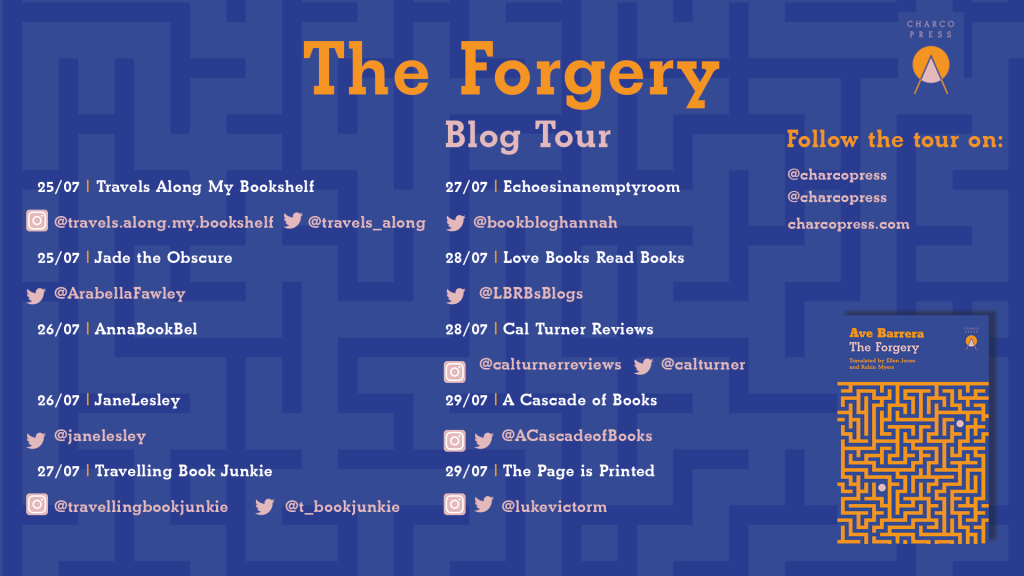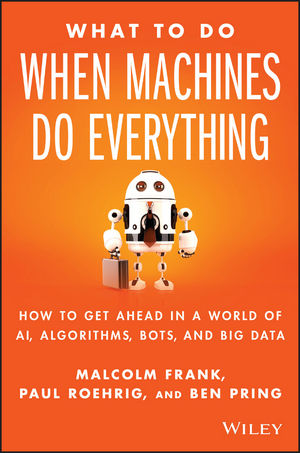
“We all live in a house on fire, no fire department to call; no way out, just the upstairs window to look out of while the fire burns the house down with us trapped, locked in it.”
– Tennessee Williams
As a fan of translated fiction, and decade-long learner of Spanish, I’m not sure why it took me so long to pick up a Spanish translation – but I’m very happy to have rectified this, and even happier that my first dip into Mexican fiction was Ave Barrera’s The Forgery.
I’ve been burned by translated works in the past – and know that not all languages lend themselves well to an English translation – but I can’t deny that I was well and truly ready to fall in love with this book and I’m so relived to say that it did not disappoint.
I was drawn to The Forgery on a very personal level. Mexico as a country is very close to my heart – my husband’s family are from Mexico, and we recently honeymooned in Guadalajara, I’m also a huge fan of Mexican art (Frida Kahlo in particular) so The Forgery ticked all my boxes.
José Federico Burgos is a suffering artist turned copyist, and soon to be forger– any dreams he once had of making it big have failed, he is down on his luck and struggling to make rent, his beat-up truck and a half-pack of crackers the only possessions to his name. That is until he meets Horacio Romero.
Horacio is an antiques dealer, collector, and hoarder of fine things. At the very heart of Horacio’s collection is La Morisca, a splendid sixteenth-century panel, around which the very bones of his family home have been constructed. Horacio can offer José the money he needs to make all his problems disappear if he can create an exact forgery of La Morisca – perfect enough to fool ‘the heirs’.
At first wary of falling once more into the murky waters of forgeries, José is powerless to resist Horacio’s offer – or is it something else? – after first setting eyes on the magnificent altarpiece.
“Young man, do not look too long at that painting, or you will sink into despair”
The Forgery jumps between timelines: Ella Fitzgerald LPs and almond-scented memories in the dilapidated artist’s studio and confused fever dreams of painted flames in the high-ceilinged hallways of the city hospital give way to José’s entrapment and resulting surrealist nightmare.
I’ve no doubt that the Forgery is just as compelling in its native Spanish as in the translation by Ellen Jones and Robin Myers. It is authentic, unspoiled, and evidently very well researched, paying homage to many great Mexican artists and revealing the bloody secrets behind historical artistic techniques. The book comes alive – from the dusty, sun-stained streets, cafés, and cantinas of Guadalajara to La Tona’s tiled kitchen, the deserted pool, and the twisting jacaranda tree by Isabel’s French doors. I feel as though I could walk through the grounds of Horacio’s house – though you’ll understand my reluctance to enter the chapel.
This curious novella will send you through a bizarre and dreamlike labyrinth where you encounter all manner of weird and wonderful characters – including a charming vagabond with toothache aptly named ‘Socket’ – and leave you desperately attempting to reach your own conclusions on the real story behind La Morisca within 170 short pages.
If you are a fan of the surreal, and up for asking a few questions that you may not find an answer to, then I would thoroughly recommend you add The Forgery to your ‘to read’ list.
Translated from the original Spanish by Charco Press, and accomplished translators, Ellen Jones and Robin Myers, The Forgery was originally published in Mexico to critical acclaim in 2016. To find out more or to purchase a copy of the book (in English or Spanish) please visit Charco Press online.
I was sent a free copy of The Forgery in exchange for an honest review.


 An attempt to analyse and condense something which encompasses everything that is yet to come feels like an exercise in failure, and yet I hold in my hands a book which does just this. A wonderfully concise and brilliantly written book, The Future: A Very Short introduction by Jennifer M. Gidley takes a look at the future by travelling into the past – a literal oxymoron if ever there was one. To understand the future, says Gidley, we must look backwards, beginning with the emergence of theories of linear time in Ancient Greece. Within the book Gidley introduces the reader to the future as a concept, exploring prophecies and predictions from throughout history, discussing the potential for machine- vs human-centred futures and highlighting the reality that is ‘multiple futures’. The future is inevitable, but our treatment of it doesn’t have to be; by exploring ‘the past of the future’ and its links with ‘present-day futures’, says Gidley, we are better prepared to create wiser futures for tomorrow.
An attempt to analyse and condense something which encompasses everything that is yet to come feels like an exercise in failure, and yet I hold in my hands a book which does just this. A wonderfully concise and brilliantly written book, The Future: A Very Short introduction by Jennifer M. Gidley takes a look at the future by travelling into the past – a literal oxymoron if ever there was one. To understand the future, says Gidley, we must look backwards, beginning with the emergence of theories of linear time in Ancient Greece. Within the book Gidley introduces the reader to the future as a concept, exploring prophecies and predictions from throughout history, discussing the potential for machine- vs human-centred futures and highlighting the reality that is ‘multiple futures’. The future is inevitable, but our treatment of it doesn’t have to be; by exploring ‘the past of the future’ and its links with ‘present-day futures’, says Gidley, we are better prepared to create wiser futures for tomorrow.

 So goes the story in ‘Beijing Smog’, the debut novel from Ian Williams, former correspondent for Channel 4 News and the Sunday Times newspaper, who spent more than two decades living, working and reporting on China. Dark, cynical and somewhat satirical, Williams presents a modern Chinese society that is suffocating and depressing, and might prove for hard reading were it not for an entourage of well-rounded, relatable characters, and, what I hope will prove to be, Williams’ signature satirical humour.
So goes the story in ‘Beijing Smog’, the debut novel from Ian Williams, former correspondent for Channel 4 News and the Sunday Times newspaper, who spent more than two decades living, working and reporting on China. Dark, cynical and somewhat satirical, Williams presents a modern Chinese society that is suffocating and depressing, and might prove for hard reading were it not for an entourage of well-rounded, relatable characters, and, what I hope will prove to be, Williams’ signature satirical humour.

